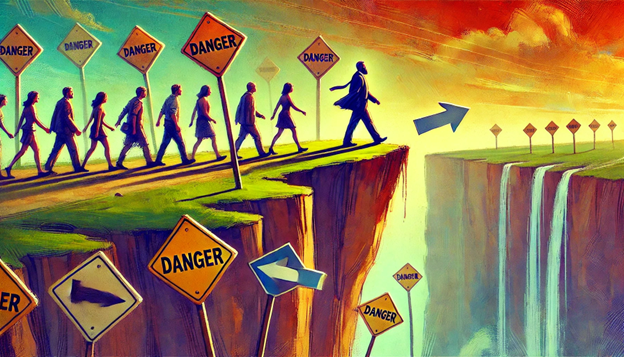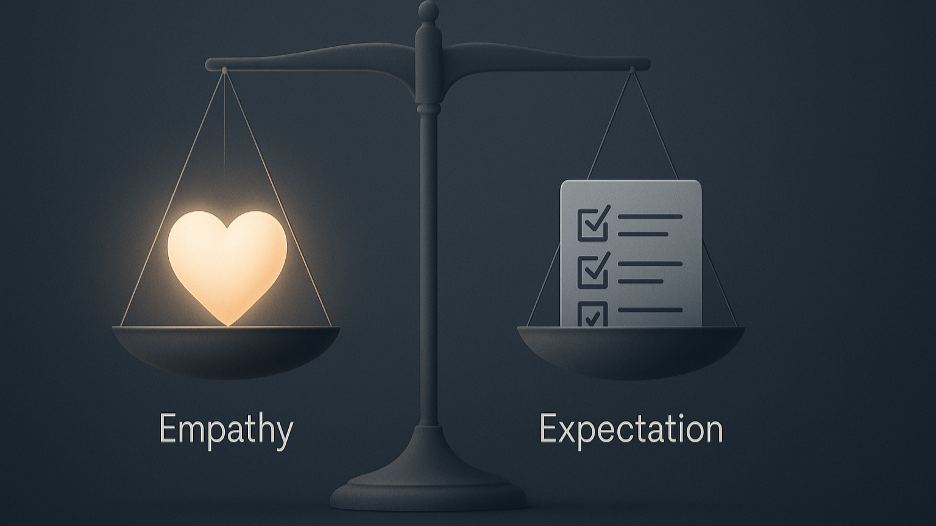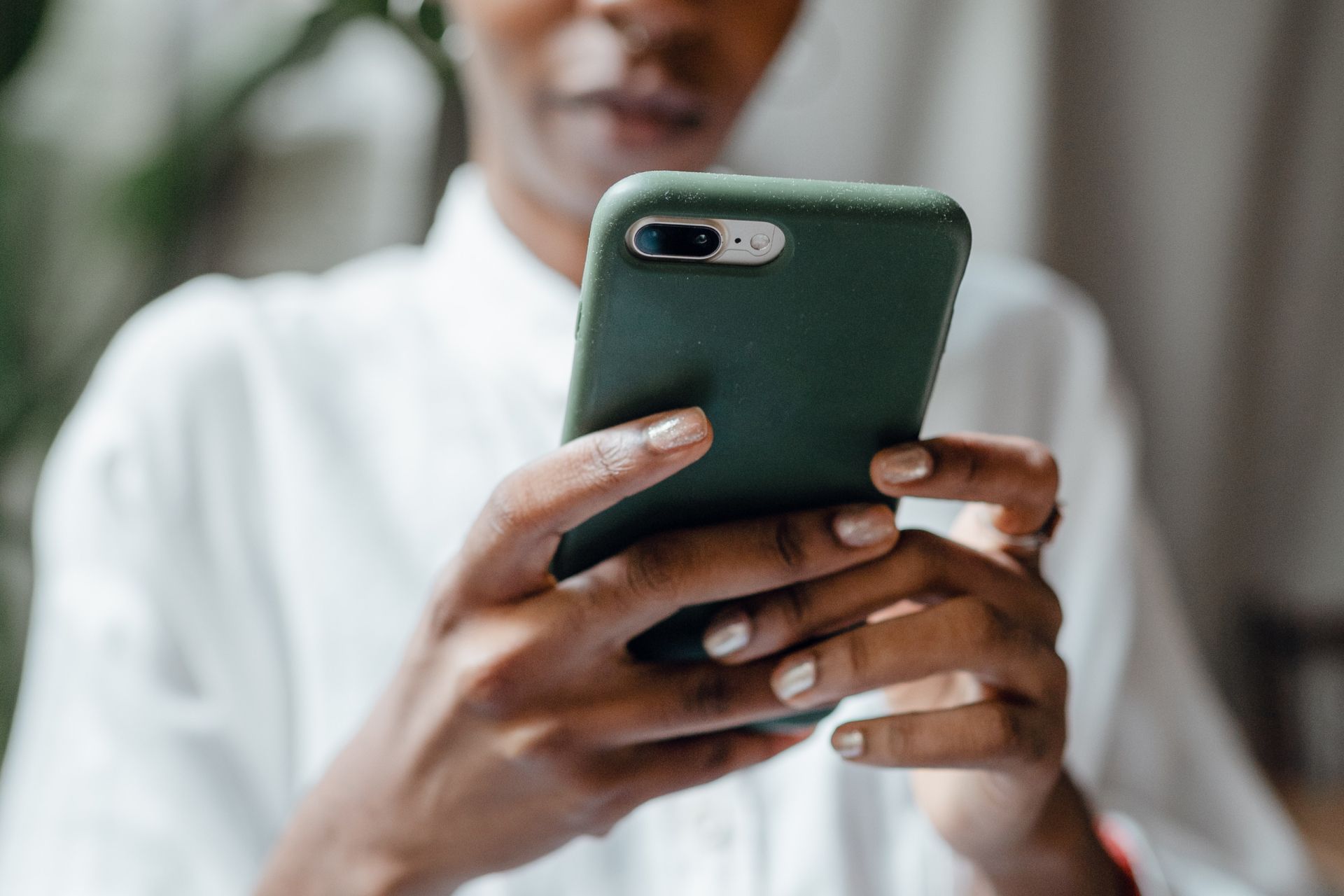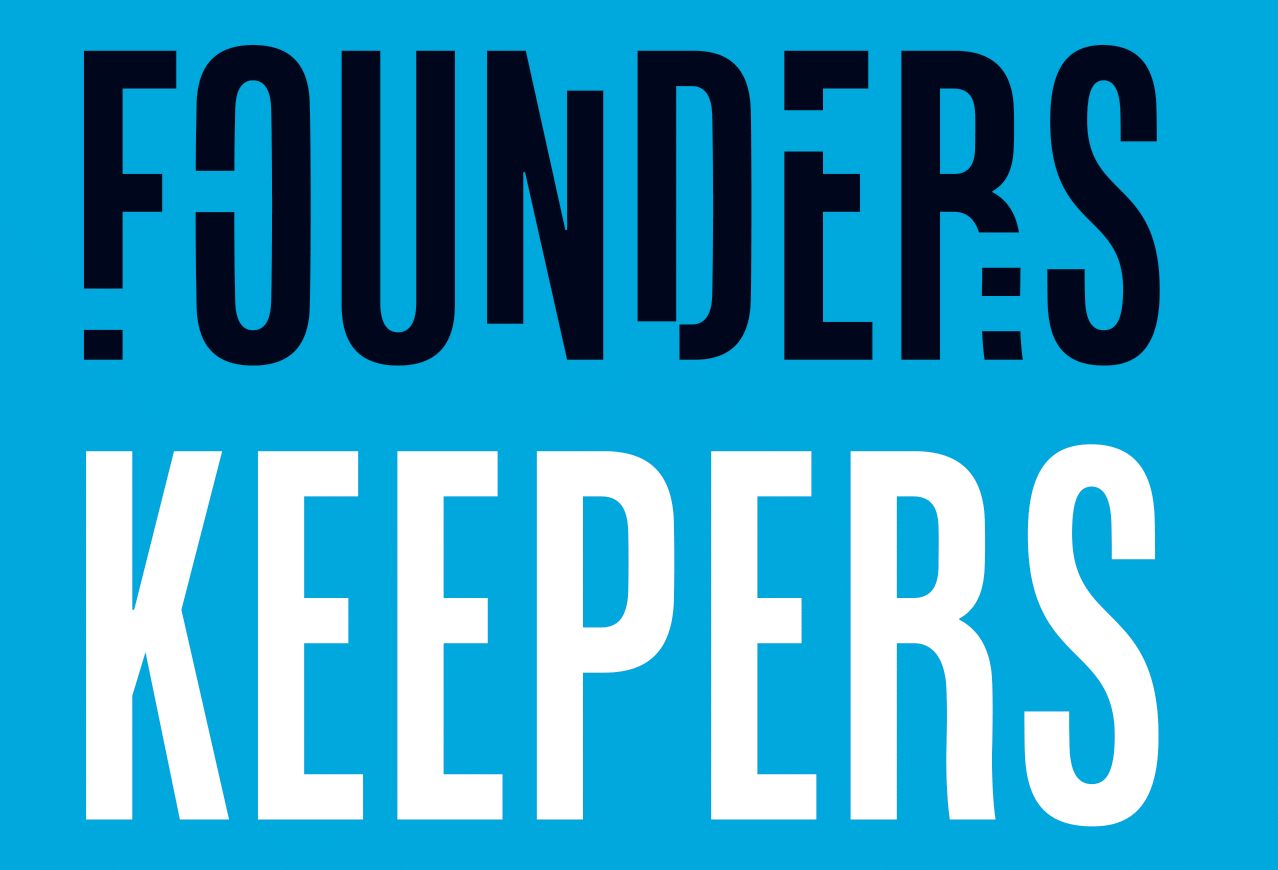Article
How Best Leaders Make Great Decisions: The Real Art of Judgment Beyond the Myths
November 12, 2024

Leadership is often framed as an innate skill—a natural “gift” of foresight and intuition. But here’s the first myth we’ll debunk: great decision-making isn’t magic. One of my early mentors gave me the following feedback, “Rich, sometimes you treat a wisp of inspiration as if it were a four-lane highway. It’s not that you shouldn’t trust your intuition, you just need to validate it.” This is what I’ve learned since then. Through extensive research on personality and 360 ratings of behavior on nearly 2,000 executives from diverse industries worldwide, I’ve learned that strong decision-making is a disciplined approach to judgment that distinguishes top leaders from the rest. These leaders don’t fall for quick fixes or rely on intuition alone; they build their decision-making skill through a blend of analysis, emotional intelligence, and strategic insight. Let’s explore what our research reveals about how great leaders make great decisions, challenging some pervasive myths in the process.
Myth #1: Leaders Are Born with a ‘Gut’ for Good Decisions Many people picture a strong leader as someone who acts swiftly, relying on an almost mystical gut instinct. But from our research, it’s clear that while intuition has a role, exceptional leaders don’t lean solely on their gut. They’re analytical, dissecting problems and identifying root causes. They avoid knee-jerk reactions and use data and context as their foundation. Our findings show that leaders who rate high in analytical skills and problem identification are able to make consistently better decisions, thanks to their ability to weigh diverse inputs and arrive at well-considered conclusions.
Practical Takeaway: Before making a quick decision, ask if it’s really grounded in analysis or just a reflex. The best leaders in our study clarify problems, consider multiple perspectives, and evaluate risk. This balanced approach—where intuition complements, rather than overrides, analysis—ensures more sound and strategic decisions.
Myth #2: Strategic Vision Means Focusing Only on the Big Picture “See the forest, not the trees.” Sounds inspiring, right? But it’s also incomplete. In reality, great leaders don’t overlook details—they take a “zoom in, zoom out” approach to strategy. According to our research, the best leaders combine big picture thinking with a precise grasp of details, enabling them to adapt to short-term needs while aligning with long-term goals. These leaders balance the forest with the trees, recognizing that both perspectives are crucial for sound judgment in complex environments.
Practical Takeaway: When facing a decision, don’t just go with what looks right from a high level. Drill down into specifics and examine how each choice supports your goals, now and in the future. The best leaders, as our research shows, have honed the ability to navigate both the telescope and the microscope.
Myth #3: Real Leaders Are Decisive and Unwavering Sure, decisiveness is important. But our research underscores that the best leaders aren’t just fast—they’re deliberate. These executives make a thoughtful choice between action and patience, recognizing that impulsivity can backfire. Decisiveness isn’t about rushing; it’s about timing. Leaders who consistently rated high in follow-through also demonstrated this deliberation—when they act, they ensure their decision is fully executed, with a strong sense of timing and purpose.
Practical Takeaway: Avoid making decisions purely for the sake of speed. Reflect on whether a pause for more data or a moment of careful thought will yield a better choice. Our findings reveal that the most effective leaders don’t view deliberation as hesitation but as essential preparation.
Myth #4: Good Leaders Always Follow Their Convictions Leaders are often depicted as unbending in their beliefs. But our research reveals that top-performing leaders exhibit cognitive flexibility—they know when to adapt their thinking. Leaders who resist change or rigidly adhere to their convictions miss out on opportunities to pivot and adjust as new information emerges. The best leaders in our study are adaptable, unafraid to revise their strategies, and more likely to succeed in dynamic, complex environments.
Practical Takeaway: When you’re resistant to change, ask yourself if it’s pride or fear of flexibility that’s holding you back. The leaders in our research embrace adaptability as a strength. Remember, it’s not flip-flopping if you’re improving and evolving.
Myth #5: Risk-Takers Are the Only Ones Who Move the Needle Hollywood loves a risk-taker, but our research shows that top leaders don’t gamble recklessly. They’re experts at calculated risk-taking—distinguishing between acceptable and unacceptable risks. They use a structured approach to weigh outcomes and act when the potential benefits justify the risks. These leaders consistently achieve better results than those who approach risk blindly or avoid it altogether.
Practical Takeaway: When you’re facing a risky choice, evaluate the potential fallout and how well-prepared you are to handle it. Leaders in our study assess risk meticulously, positioning themselves for wins without courting disaster. This kind of measured risk-taking is a hallmark of sustainable leadership.
Myth #6: Emotional Intelligence Just Means Being “Nice” Emotional intelligence (EQ) is often misunderstood as “softness.” But high EQ is a critical tool for strategic influence. Leaders with high EQ manage their own emotions well, understand others’ perspectives, and build trust. They navigate conflict with finesse and inspire team buy-in. Our research shows that social confidence and diplomacy are vital qualities for leaders who master this emotional balance, building loyalty and morale that amplify their decision-making power.
Practical Takeaway: To develop EQ, start with self-awareness: identify your emotional triggers and examine how they influence your choices. Then, focus on understanding team dynamics. Our data show that leaders who tailor their approach to different people and situations build stronger teams and achieve better outcomes.
Myth #7: Complexity Requires Total Control Many leaders think that managing complexity means controlling everything. But our research with executives reveals that high-performing leaders know when to let go, fostering flexibility and encouraging innovation within their teams. They act as “guiding stars,” offering direction while empowering others to make decisions and solve problems on the ground. Leaders who rated highly in empowerment excelled in their roles by encouraging this autonomy, allowing their teams to shine within a shared framework of goals.
Practical Takeaway: Identify areas where you can empower your team. Shift from micromanaging to guiding, and trust that capable people can solve problems creatively. Our findings affirm that leaders who embrace this style often get better, more innovative results.
Myth #8: Leaders Must “Know It All” The myth of the omniscient leader is just that—a myth. Our research highlights that leaders who embrace intellectual humility achieve more sustainable success. By recognizing their limits, these leaders actively seek diverse perspectives and feedback. They’re not afraid to say, “I don’t know.” This openness fosters a culture of knowledge-sharing and insight that enriches the entire organization.
Practical Takeaway: Practice intellectual humility by regularly seeking feedback, not only from peers but from all levels of the organization. Our data show that leaders who do this avoid the pitfalls of overconfidence, making smarter decisions with the full benefit of collective insight.
Myth #9: Stress Should Be Suffered in Silence There’s a persistent belief that leaders need to handle stress internally, keeping it hidden. Yet, our research shows that resilience under pressure is key to good judgment. Leaders who manage stress effectively—through deliberate resilience practices—make clearer, more rational decisions. Those who prioritize mental and physical health maintain cognitive clarity, enabling better decision-making even under intense pressure.
Practical Takeaway: Make stress management a leadership priority. Incorporate resilience practices like meditation or structured breaks. Our findings reveal that resilience isn’t just personal—it impacts the quality of leadership judgment in high-stakes moments.
Myth #10: Leadership is All About Results Results matter, but the process of achieving them matters just as much. Great leaders know that good judgment balances outcomes with a reflective approach to how decisions are made. The leaders in our research use “double-loop learning,” where they don’t just evaluate whether a decision worked but also examine how the decision was made. This self-reflection keeps them growing and adapting, enabling them to learn from both wins and missteps.
Practical Takeaway: Regularly review your decision-making process, not just the outcomes. Ask, “What went right?” and “Where could we improve?” By focusing on continuous improvement, you evolve as a leader, making each decision sharper than the last.
The Bottom Line: Good Judgment is Crafted, Not Gifted Our research on nearly 2,000 executives has shown that good judgment isn’t a mystical talent. It’s a skill crafted over time, blending analytical thinking with empathy, risk management, resilience, and intellectual humility. Great leaders don’t rest on their innate abilities; they grow through disciplined reflection, calculated risk-taking, and a willingness to learn. By balancing data with insight, courage with caution, and strength with adaptability, they build decision-making practices that create lasting value and inspire those around them.
Myth #1: Leaders Are Born with a ‘Gut’ for Good Decisions Many people picture a strong leader as someone who acts swiftly, relying on an almost mystical gut instinct. But from our research, it’s clear that while intuition has a role, exceptional leaders don’t lean solely on their gut. They’re analytical, dissecting problems and identifying root causes. They avoid knee-jerk reactions and use data and context as their foundation. Our findings show that leaders who rate high in analytical skills and problem identification are able to make consistently better decisions, thanks to their ability to weigh diverse inputs and arrive at well-considered conclusions.
Practical Takeaway: Before making a quick decision, ask if it’s really grounded in analysis or just a reflex. The best leaders in our study clarify problems, consider multiple perspectives, and evaluate risk. This balanced approach—where intuition complements, rather than overrides, analysis—ensures more sound and strategic decisions.
Myth #2: Strategic Vision Means Focusing Only on the Big Picture “See the forest, not the trees.” Sounds inspiring, right? But it’s also incomplete. In reality, great leaders don’t overlook details—they take a “zoom in, zoom out” approach to strategy. According to our research, the best leaders combine big picture thinking with a precise grasp of details, enabling them to adapt to short-term needs while aligning with long-term goals. These leaders balance the forest with the trees, recognizing that both perspectives are crucial for sound judgment in complex environments.
Practical Takeaway: When facing a decision, don’t just go with what looks right from a high level. Drill down into specifics and examine how each choice supports your goals, now and in the future. The best leaders, as our research shows, have honed the ability to navigate both the telescope and the microscope.
Myth #3: Real Leaders Are Decisive and Unwavering Sure, decisiveness is important. But our research underscores that the best leaders aren’t just fast—they’re deliberate. These executives make a thoughtful choice between action and patience, recognizing that impulsivity can backfire. Decisiveness isn’t about rushing; it’s about timing. Leaders who consistently rated high in follow-through also demonstrated this deliberation—when they act, they ensure their decision is fully executed, with a strong sense of timing and purpose.
Practical Takeaway: Avoid making decisions purely for the sake of speed. Reflect on whether a pause for more data or a moment of careful thought will yield a better choice. Our findings reveal that the most effective leaders don’t view deliberation as hesitation but as essential preparation.
Myth #4: Good Leaders Always Follow Their Convictions Leaders are often depicted as unbending in their beliefs. But our research reveals that top-performing leaders exhibit cognitive flexibility—they know when to adapt their thinking. Leaders who resist change or rigidly adhere to their convictions miss out on opportunities to pivot and adjust as new information emerges. The best leaders in our study are adaptable, unafraid to revise their strategies, and more likely to succeed in dynamic, complex environments.
Practical Takeaway: When you’re resistant to change, ask yourself if it’s pride or fear of flexibility that’s holding you back. The leaders in our research embrace adaptability as a strength. Remember, it’s not flip-flopping if you’re improving and evolving.
Myth #5: Risk-Takers Are the Only Ones Who Move the Needle Hollywood loves a risk-taker, but our research shows that top leaders don’t gamble recklessly. They’re experts at calculated risk-taking—distinguishing between acceptable and unacceptable risks. They use a structured approach to weigh outcomes and act when the potential benefits justify the risks. These leaders consistently achieve better results than those who approach risk blindly or avoid it altogether.
Practical Takeaway: When you’re facing a risky choice, evaluate the potential fallout and how well-prepared you are to handle it. Leaders in our study assess risk meticulously, positioning themselves for wins without courting disaster. This kind of measured risk-taking is a hallmark of sustainable leadership.
Myth #6: Emotional Intelligence Just Means Being “Nice” Emotional intelligence (EQ) is often misunderstood as “softness.” But high EQ is a critical tool for strategic influence. Leaders with high EQ manage their own emotions well, understand others’ perspectives, and build trust. They navigate conflict with finesse and inspire team buy-in. Our research shows that social confidence and diplomacy are vital qualities for leaders who master this emotional balance, building loyalty and morale that amplify their decision-making power.
Practical Takeaway: To develop EQ, start with self-awareness: identify your emotional triggers and examine how they influence your choices. Then, focus on understanding team dynamics. Our data show that leaders who tailor their approach to different people and situations build stronger teams and achieve better outcomes.
Myth #7: Complexity Requires Total Control Many leaders think that managing complexity means controlling everything. But our research with executives reveals that high-performing leaders know when to let go, fostering flexibility and encouraging innovation within their teams. They act as “guiding stars,” offering direction while empowering others to make decisions and solve problems on the ground. Leaders who rated highly in empowerment excelled in their roles by encouraging this autonomy, allowing their teams to shine within a shared framework of goals.
Practical Takeaway: Identify areas where you can empower your team. Shift from micromanaging to guiding, and trust that capable people can solve problems creatively. Our findings affirm that leaders who embrace this style often get better, more innovative results.
Myth #8: Leaders Must “Know It All” The myth of the omniscient leader is just that—a myth. Our research highlights that leaders who embrace intellectual humility achieve more sustainable success. By recognizing their limits, these leaders actively seek diverse perspectives and feedback. They’re not afraid to say, “I don’t know.” This openness fosters a culture of knowledge-sharing and insight that enriches the entire organization.
Practical Takeaway: Practice intellectual humility by regularly seeking feedback, not only from peers but from all levels of the organization. Our data show that leaders who do this avoid the pitfalls of overconfidence, making smarter decisions with the full benefit of collective insight.
Myth #9: Stress Should Be Suffered in Silence There’s a persistent belief that leaders need to handle stress internally, keeping it hidden. Yet, our research shows that resilience under pressure is key to good judgment. Leaders who manage stress effectively—through deliberate resilience practices—make clearer, more rational decisions. Those who prioritize mental and physical health maintain cognitive clarity, enabling better decision-making even under intense pressure.
Practical Takeaway: Make stress management a leadership priority. Incorporate resilience practices like meditation or structured breaks. Our findings reveal that resilience isn’t just personal—it impacts the quality of leadership judgment in high-stakes moments.
Myth #10: Leadership is All About Results Results matter, but the process of achieving them matters just as much. Great leaders know that good judgment balances outcomes with a reflective approach to how decisions are made. The leaders in our research use “double-loop learning,” where they don’t just evaluate whether a decision worked but also examine how the decision was made. This self-reflection keeps them growing and adapting, enabling them to learn from both wins and missteps.
Practical Takeaway: Regularly review your decision-making process, not just the outcomes. Ask, “What went right?” and “Where could we improve?” By focusing on continuous improvement, you evolve as a leader, making each decision sharper than the last.
The Bottom Line: Good Judgment is Crafted, Not Gifted Our research on nearly 2,000 executives has shown that good judgment isn’t a mystical talent. It’s a skill crafted over time, blending analytical thinking with empathy, risk management, resilience, and intellectual humility. Great leaders don’t rest on their innate abilities; they grow through disciplined reflection, calculated risk-taking, and a willingness to learn. By balancing data with insight, courage with caution, and strength with adaptability, they build decision-making practices that create lasting value and inspire those around them.
share this
Related Articles
Related Articles

The Nicest Boss in the World He was adored. He remembered birthdays, checked in on people’s families, and stayed late helping fix slides no one asked him to touch. His team called him “the best boss we’ve ever had.” He was also running on fumes. Behind the warm smile was a leader quietly burning out — drowning in everyone else’s problems, too empathetic for his own good. If you’re a leader who prides yourself on caring deeply, this might sting a little: empathy, taken too far, becomes control in disguise. Empathy’s Secret Shadow Empathy is essential for leadership. It builds loyalty, safety, and trust. But the same trait that makes people feel seen can also make them dependent. When you can’t tolerate someone else’s discomfort, you start protecting them from it. You step in to fix, to soothe, to rescue. It looks noble. It feels generous. But it quietly steals agency — theirs and yours. Your team stops growing because you’re doing their emotional labor. You stop leading because you’re managing feelings instead of outcomes. That’s the hidden cost of care. The Emotional Guilt Loop Over-empathetic leaders live in a constant tug-of-war between compassion and guilt. They think: “They’re already stretched — I can’t pile more on.” “If I push harder, I’ll seem uncaring.” “I’ll just do it myself; it’s easier.” Sound familiar? That’s not empathy anymore. That’s guilt masquerading as kindness. And guilt makes terrible business decisions. Because guilt doesn’t guide you toward what’s right. It just steers you away from what feels uncomfortable. A Founder’s Story One founder I coached, let’s call her Lina, led with heart. She built her company around “people first.” And she meant it. But somewhere along the way, “people first” turned into “me last.” She couldn’t say no. She kept saving underperformers, approving vacations during crunch time, rewriting others’ work to spare them stress. Her team adored her — until they didn’t. Because beneath her helpfulness was quiet resentment. And resentment always leaks. The breakthrough came when she realized something simple but hard: “I was protecting people from learning the hard parts of growth.” That’s when she started leading again instead of parenting. When Caring Becomes Control Here’s the paradox: the more you care, the more you risk over-controlling. You jump in to fix not because you don’t trust them, but because you feel for them. It’s empathy turned inward — I can’t stand watching them struggle. But leadership isn’t about eliminating discomfort. It’s about using it wisely. People grow by stretching, not by being spared. When you save someone from every failure, you’re also saving them from competence. The Biology of Burnout Chronic empathy triggers chronic stress. When you absorb other people’s emotions all day, your nervous system never gets a break. You start mirroring everyone’s anxiety like an emotional amplifier. Your brain thinks you’re in crisis — even when you’re not. That’s why over-caring leaders are often the first to burn out. Their compassion becomes constant cortisol. The irony? The leaders who want to create safety for others end up unsafe themselves. How to Care Without Carrying Feel, then filter. It’s okay to feel someone’s frustration. Just don’t keep it. Ask: “Is this mine to hold?” Help through accountability. Say, “I know this is tough, and I also need you to take ownership.” The and matters. Let discomfort be developmental. When a team member struggles, resist rescuing. Stay present, not protective. Coach before you comfort. Instead of “Don’t worry,” try, “What do you think your next move is?” Reframe empathy as empowerment. Caring isn’t about absorbing pain; it’s about believing people can handle it. Funny but True One exec I worked with told me, “Every time I stop helping, I feel like a jerk.” I said, “No — you feel like a leader. It just takes a while to tell the difference.” He laughed and said, “So… you’re telling me leadership feels bad at first?” I said, “Exactly. Growth always does.” The Cultural Ripple Effect When leaders overfunction, teams underfunction. When leaders hold space instead of taking space, teams rise. Empathy should expand others, not consume you. The healthiest cultures balance care and candor — support and stretch. They normalize struggle as part of the process instead of something to be hidden or rescued. That’s what real compassion looks like in motion. The Maturity of Tough Empathy Empathy without boundaries is exhaustion. Empathy with boundaries is wisdom. The mature version of empathy doesn’t say, “I’ll protect you.” It says, “I believe you can handle this — and I’ll walk beside you while you do.” That’s not cold. That’s developmental. Your Challenge This Week Notice where you’re rescuing someone instead of coaching them. Pause before you step in. Ask yourself, Am I helping because they need it — or because I need to feel helpful? Then take one small risk: let them handle it. They’ll probably surprise you. And you’ll feel lighter than you have in months. Final Word Caring is beautiful. It’s what makes you human. But unchecked empathy turns leaders into emotional pack mules — carrying what was never theirs to bear. Real leadership is still full of heart. It just remembers that compassion without accountability isn’t love. It’s fear. And the moment you stop rescuing everyone, you finally start freeing them — and yourself.s)

The Smart Leader’s Blind Spot It’s strange how often the smartest people make the worst decisions under pressure. They don’t lose IQ. They lose perspective. I’ve seen this happen more times than I can count. A sharp, decisive executive starts second-guessing every move. They overanalyze, overwork, and overcontrol — all in the name of being “thorough.” They think they’re being rational. But underneath the spreadsheets and meetings is something far less logical. It’s fear. The Fear That Doesn’t Look Like Fear We think of fear as panic — sweating, shaking, obvious. But most leadership fear hides behind competence. It shows up as perfectionism, busyness, overcommitment, indecision. It sounds like, “Let’s get more data.” “Let’s not rush this.” “Let’s keep this one close.” That’s not analysis. That’s avoidance with a better vocabulary. When fear runs the show, the goal subtly shifts from making the right decision to avoiding the wrong one. And those two things are worlds apart. The Cost of Fear-Based Leadership When leaders operate from fear, everything tightens. They stop listening. They rush to defend. They play small when the company needs boldness. They keep people who are loyal over people who are competent — because loyalty feels safer. And here’s the real tragedy: the team starts copying the fear. They become cautious, compliant, quiet. Pretty soon, no one’s leading anymore. They’re all managing risk — mostly emotional risk. A CEO’s Moment of Truth One CEO I coached — brilliant, confident, deeply human — was terrified of being wrong in front of his board. He masked it well. On the outside: decisive. Inside: a constant hum of anxiety. After a tough quarter, he admitted, “I realized half my decisions weren’t based on strategy — they were based on protecting my image.” That moment of honesty was the start of his maturity curve. Once he could name the fear, it stopped running his show. He didn’t become fearless. He became aware. And awareness is what turns reaction into wisdom. Why Fear Feels Safer Than Clarity Fear has a strange way of convincing us it’s caution. Caution whispers, “Slow down and look.” Fear screams, “Don’t move.” The first sharpens judgment. The second paralyzes it. And the more we listen to fear, the more it disguises itself as prudence. That’s why emotional maturity isn’t about suppressing fear. It’s about being able to say, “Ah, that’s fear talking — not fact.” How Fear Distorts the Mind Here’s what happens when fear hijacks leadership: Tunnel vision: You fixate on the immediate threat and forget the big picture. Confirmation bias: You start looking for data that validates your anxiety. Short-termism: You make safe decisions that feel good now and cause pain later. Blame shifting: You protect your ego by pushing ownership outward. The mind gets smaller. The leader gets reactive. The company gets stuck. The Maturity Shift Emotional maturity isn’t about being unshakable. It’s about staying curious in the presence of fear. Mature leaders don’t pretend they’re fearless. They just don’t let fear make the decisions. They pause, breathe, and ask, “What part of this is data, and what part is my insecurity talking?” That single question can change everything. A Founder’s Story A founder I worked with once said, “I’m not afraid — I just have high standards.” But as we unpacked it, he realized those “high standards” were actually a way to control outcomes. He feared disappointment — his own and others’. When he finally stopped trying to protect his reputation and started protecting his clarity, his decisions got faster and cleaner. The business didn’t just grow — it started breathing again. Because when you stop trying to look right, you finally have room to be right. Funny, But True I once asked a CEO what he’d do differently if he weren’t afraid of failing. He said, “Probably the same things I’m doing now — just with less Advil.” That’s the thing: most leaders already know what to do. Fear just makes it hurt more. How to Lead Without Fear (Even When It’s There) Name it early. The sooner you recognize fear, the less power it has. Ask yourself, “What’s the story fear’s telling me right now?” Reframe mistakes as tuition. You’ll still pay for errors — might as well learn something from them. Separate identity from outcome. A bad decision doesn’t mean a bad leader. It means a leader who’s still learning — like everyone else. Keep one truth-teller nearby. Someone who loves you enough to tell you when you’re acting from ego. Practice micro-bravery. Tell one hard truth a day. Say “I don’t know” once a week. Let discomfort become strength training. The Paradox of Fear Fear doesn’t make you weak. It means you care. But if you never face it, it becomes your compass — and it always points backward. Courage, maturity, clarity — they’re not opposites of fear. They’re what happen when you stop running from it. Your Challenge This Week Next time you feel that knot in your stomach — before a board meeting, a tough conversation, a high-stakes call — pause. Ask yourself: What am I afraid might happen? Then ask: What might happen if I act from clarity instead of fear? That’s not therapy. That’s leadership hygiene. Final Word The mark of maturity isn’t fearlessness. It’s self-awareness. You can’t control your fear. But you can choose whether it sits in the driver’s seat or the passenger’s. Great leaders don’t wait for fear to disappear. They lead with it beside them — quietly, respectfully — but never in charge.

The Charisma Illusion Charisma gets all the press. It fills conference rooms, wins funding rounds, and dominates the LinkedIn highlight reel. We treat it like the gold standard of leadership — as if volume equals vision. But charisma is a sugar high. It spikes energy, then crashes trust. Composure, on the other hand — quiet, grounded, centered composure — is the kind of influence that lasts. It doesn’t light up a room; it settles one. When things go sideways, it’s not the charismatic leader people look for. It’s the calm one. The Crisis Test Picture this. The product just failed. The client’s furious. Your team’s pacing like trapped cats. Two leaders walk in. One storms into action — loud, fast, “What the hell happened here?” The other walks in slowly, looks around, and says, “Okay, let’s breathe. What do we know so far?” The first one gets attention. The second one gets results. That’s emotional geometry — the calmest person in the room reshapes everyone else’s state. Why Calm Is the Real Power When you stay composed, you’re not just managing your emotions — you’re regulating the entire system. Here’s the neuroscience behind it: people mirror the nervous system of whoever has the most authority. If you’re grounded, they sync to your rhythm. If you’re frantic, they sync to that instead. You don’t need to lecture anyone on resilience. You just have to model it. It’s not charisma that makes people trust you; it’s the quiet sense that you’re not going to lose your mind when things get hard. Charisma’s Half-Life Charisma is a spark. It can ignite a team — but if there’s no composure beneath it, the whole thing burns out. You’ve seen this movie before: the leader who rallies everyone with a passionate all-hands speech, then disappears into reaction mode when things get messy. Charisma without composure is like caffeine without sleep. You’re awake, but you’re not steady. Composure doesn’t get the applause. It gets the loyalty. A Founder’s Story One founder I worked with — I’ll call him David — was known for being a “high-voltage” guy. He could pitch an investor, fire up a crowd, or talk anyone into anything. But his team? They were walking on eggshells. His energy filled every room, but it left no oxygen for anyone else. During one session, I asked, “When you raise your voice, what happens to theirs?” He went quiet. That was the moment he understood that his passion — the thing he was most proud of — had become the team’s anxiety. A year later, his team described him differently: “He’s still intense, but steady. We trust him more now.” He didn’t lose charisma; he layered it with composure. The Calm Before the Influence Here’s what composure actually looks like: You listen longer. Because real influence starts with attention, not argument. You breathe before reacting. That pause isn’t weakness; it’s power management. You let silence do the work. Charisma fills every space; composure creates space for others to step in. You own your tone. You realize your sighs, your speed, your face — they’re all communication tools whether you intend them or not. You choose steadiness over certainty. People don’t need you to know everything. They just need to know you’re okay not knowing. Funny But True A client once told me, “When I’m calm in a meeting, people assume I’m hiding something.” I said, “Good. Let them wonder.” That’s how unfamiliar calm has become. In some cultures, composure looks radical — even suspicious. But it’s exactly what people crave in a world that never shuts up. Why Charisma Is Easier (and More Addictive) Charisma gets feedback. You see the energy rise, you feel the applause. It’s visible. Composure feels invisible — until you lose it. No one thanks you for staying calm during a crisis. But they remember it when deciding whether to follow you into the next one. That’s why maturity in leadership means getting comfortable with the quiet wins — the meeting that didn’t spiral, the argument that didn’t happen, the team that stayed focused because you did. The Emotional Geometry in Practice Think of composure as geometry because emotions move through space. When you enter a room, you alter its emotional shape. If you radiate calm, people’s shoulders drop. Their thinking widens. They start contributing. If you radiate stress, the room contracts. People shrink. Ideas vanish. Influence isn’t what you say. It’s the energy field you create. Your Challenge This Week Before your next high-stakes meeting, pause outside the door. Take one deep breath and ask yourself: What energy does this room need from me right now? Then bring only that. Nothing more. You’ll be amazed how fast everything slows down when you do. Final Word Charisma captures attention. Composure builds trust. One is about how loudly you shine; the other is about how steadily you glow. The leader who can stay centered when everyone else is spinning doesn’t just have influence — they are the influence. And that’s the kind of power that never burns out.
STAY UP TO DATE
GET PATH'S LATEST
Receive bi-weekly updates from the church, and get a heads up on upcoming events.
Contact Us








